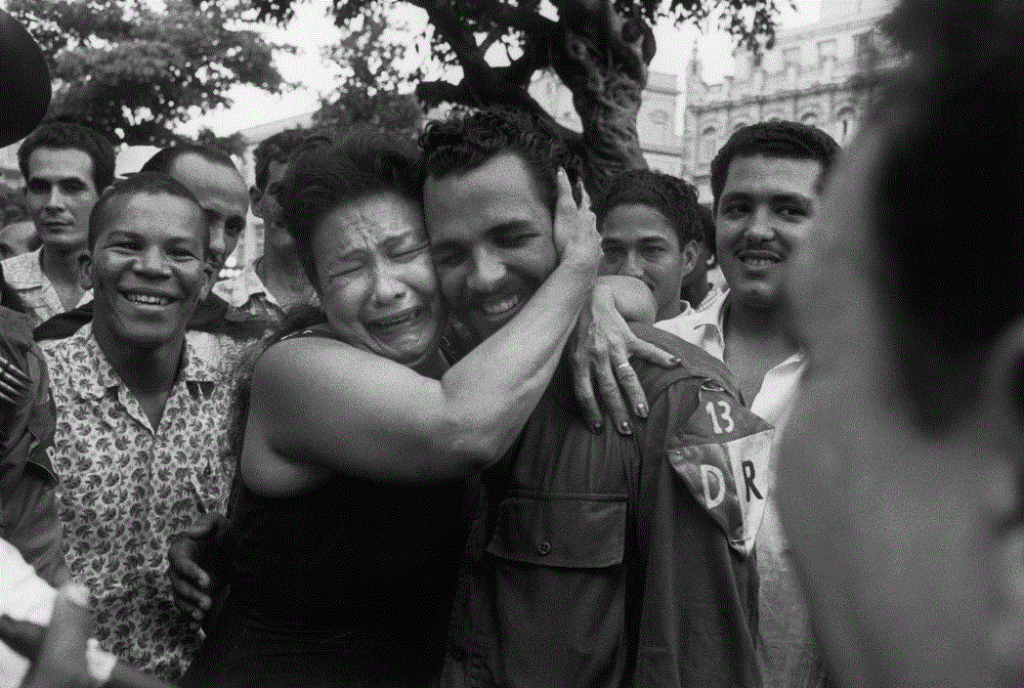Somos+, Jose M. Presol — “The Revolution declares its absolute and reverent respect for the constitution, which was given to the people in 1940, and restores it as the official legal code. It declares the only flag to be the tricolor with the lone star and carries it forth as always, glorious and strong, into the heat of battle. And there is no other anthem other than the Cuban national anthem, recognized worldwide by the vibrant stanza, ‘To die for the homeland is to live.’ ”
These are not the words of a counterrevolutionary. They are not the words of the current defenders (for how long?) of the current Cuban government. They are not even the words of Dr. Fidel Castro. They are the words of our own Martyrs of Moncado. And I say “our” because they are ours; they long ago stopped being theirs. We are the revolutionaries of today, fighting against an unjust dictatorship, just as they were the revolutionaries of yesterday, fighting against another unjust dictatorship.
This was written by Raúl Gómez García and is excerpt from the so-called “Manifesto from the Moncada Revolutionaries to the Nation.” It amounts to a statement of conscience, assuming they had one, that has not been fulfilled.
The first revolutionaries to enter Havana on New Year’s Eve 1958 were not the forces of the 26th of July Movement, a claim that is not disputed when the subject comes up. The first to go in were men and women of the Second National Escambray Front.
Nor were Camilo Cienfuegos nor Ché Guevara the ones who occupied the Columbia or La Cabaña military barracks. It was a Ramón Barquín, a native of the city of Cienfuegos and an army colonel, who took command of those installations. He had been imprisoned on the Isle of Pines (now the Isle of Youth) since 1956 for leading a rebellion of Los Puros (“the pure”) against Batista. After he was liberated, he flew to Havana, where he became de facto commander of the army and president of the republic. However, he put aside any personal ambition and on Day 3 handed over command to Cienfuegos on the orders of the acting president, Manuel Urrutia Lleó. Colonel Barquín died in exile on March 3, 2008.
Speaking of Manuel Urrutia, he was a key figure in the trials of Frank País and many other prisoners after the Santiago uprising, as well as the trials of various men captured from the Granma expedition. They were found innocent and released because, as Urrutia reasoned, the 1940 constitution recognized the right to take up arms against anyone holding power illegally.
But it was not just in Havana where things were happening. Santiago de Cuba had been taken by a column led by Huber Matos. The city was serving as the provisional capital of the country and it was there on January 1 that Urrutia was sworn in as acting president based on previous agreements made among the various anti-Batista organizations.
Urrutia began appointing a government, the first post revolutionary government and one which did not include either Fidel or Raúl Castro, or Ernesto Guevara, or any number of the future “great leaders.” Of its nineteen members, which included Urrutia, eight held no government postions at the times of their deaths in Cuba. Six died in exile, one died in a traffic accident, one was shot, one committed suicide, one died in office, and one still lives in Cuba, though in a low-level government position.
It is quite striking how lethal being a member of that first government turned out to be. Those who died in exile were the president (Manuel Urrutia), the prime minister (José Miró Cardona), the minister of state (Roberto Agramonte Pichardo) the minister of public works (Manuel “Manolo” Ray Rivero), the minister of social welfare (Elena Mederos Cabañas) and the minister of housing (Rufo López Fresquet). The one who was shot was the minister of agriculture (Humberto Sori Marin).
And speaking of the 1940 Constitution, the fact that it outlawed the death penalty did not stop one “gentleman” named Ernesto Guevara and another named Raúl Castro from making good use of it in Havana and Santiago.
And speaking of manifestos once again, we might conclude with another one: the “Manifesto to the People of Cuba,” published by Bohemia magazine on July 26, 1957. (Yes, ladies and gentelmen, Cuba’s “capitalist and bourgeois” press was allowed to publish manfiestos by those fighting in the mountains.). This manifesto — signed by Fidel Castro, Raúl Chibás (who died in exile) and Felipe Pazos (who also died in exile) — promised four things:
Restoration of the 1940 constitution.
Free and democratic elections after one year of provisional government.
Freedom for all political prisoners.
Absolute freedom of the press.
But since Fidel did not enter Havana on January 1 but rather on January 8, shall we wait a few days to discuss these four points?

